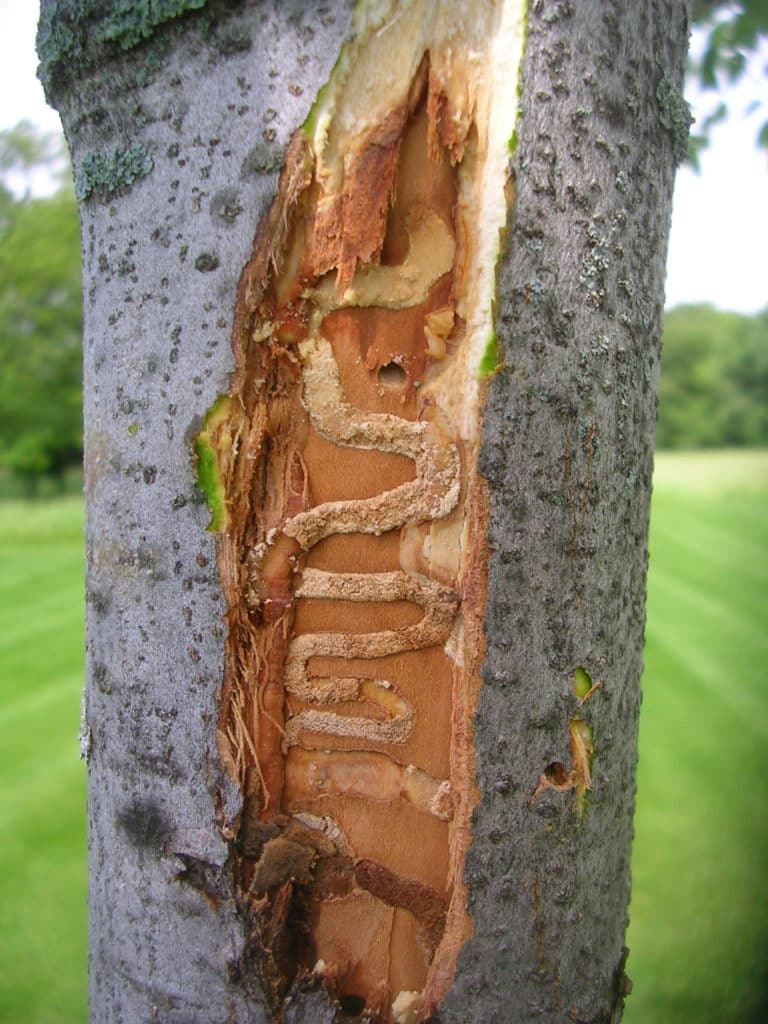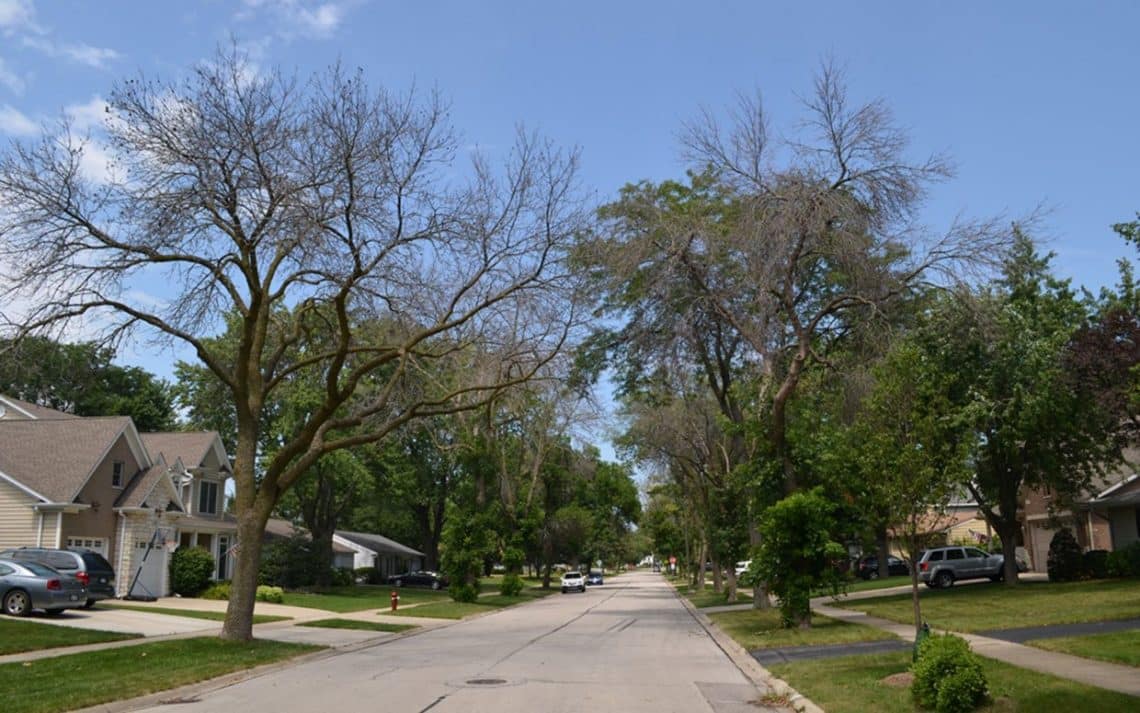Watching a tree in your landscape deteriorate and die is heartbreaking—especially if the tree has become a cherished fixture in your yard. This scenario is all too common when the Emerald Ash Borer (EAB) attacks.
One of the most destructive forest pests ever discovered in North America, EAB (Agrilus planipennis Fairmaire) is a highly invasive beetle native to Asia. Originally discovered in Michigan near Detroit in 2002, this small, metallic green pest has killed tens of millions of ash trees in many states, leaving entire city treescapes destroyed. The adult beetle doesn’t do much damage eating ash foliage, but its larvae decimate trees by feeding just under the bark and disrupting the tree’s flow of water and nutrients.
Until recently, there wasn’t much that could be done to prevent ash trees from dying once hit by EAB. Thanks to pioneering research done by the Davey Tree Expert Company, there’s now a way to detect the condition much earlier. When the infestation is detected and treated within the first year, ash trees often can be saved.
This is good news for the nation’s seven billion ash trees that are potentially at risk if not treated, says Anand Persad, PhD., manager of arboriculture and plant sciences for the Davey Tree Expert Company. He directed a research study of 700 ash trees in Ohio that took place from 2008-2012. Persad found that infected trees break at the top of the tree first, but this is difficult to see from the ground and at that point the trees appear to otherwise be healthy. By the time it’s clear they’re sick, which is usually after two to three years of infestation, it’s often too late to save them.
The initial means of detecting EAB relied on seeing a thinning canopy and exit holes from the trunk created when the larvae become beetles and fly off. Persad’s research uncovered earlier signs. Whereas when healthy tree limbs break, it occurs close to the trunk; trees infected by EAB have branches that break midway. Early diagnosis can be made by looking for telltale cracks in these areas, especially after stormy weather.
Several treatment options that protect ash trees are available, says Persad. Proactively treat with a systemic product that repels the egg laying or kills larvae that hatch and are trying to bore into the tree, or use the systemic product curatively after EAB has been detected but the canopy has not thinned by more than one-third. Cover-sprays can also be applied to branches and trunks when the adult EAB are active and flying around.
If you have an ash tree and live in an area affected by EAB, keep an eye out for symptoms of infestation, including bark splitting, small branch and twig failures, wood peckers and thinning canopies.
“If EAB is in your area, it’s wise to have your trees inspected and proactively treated with a systemic product,” says Persad. “Treatment over the course of several years may be a fraction of the cost of removal, and you still enjoy the full benefits of the tree.”
 A young ash tree with EAB damage (Davey Tree Expert Company)
A young ash tree with EAB damage (Davey Tree Expert Company)

